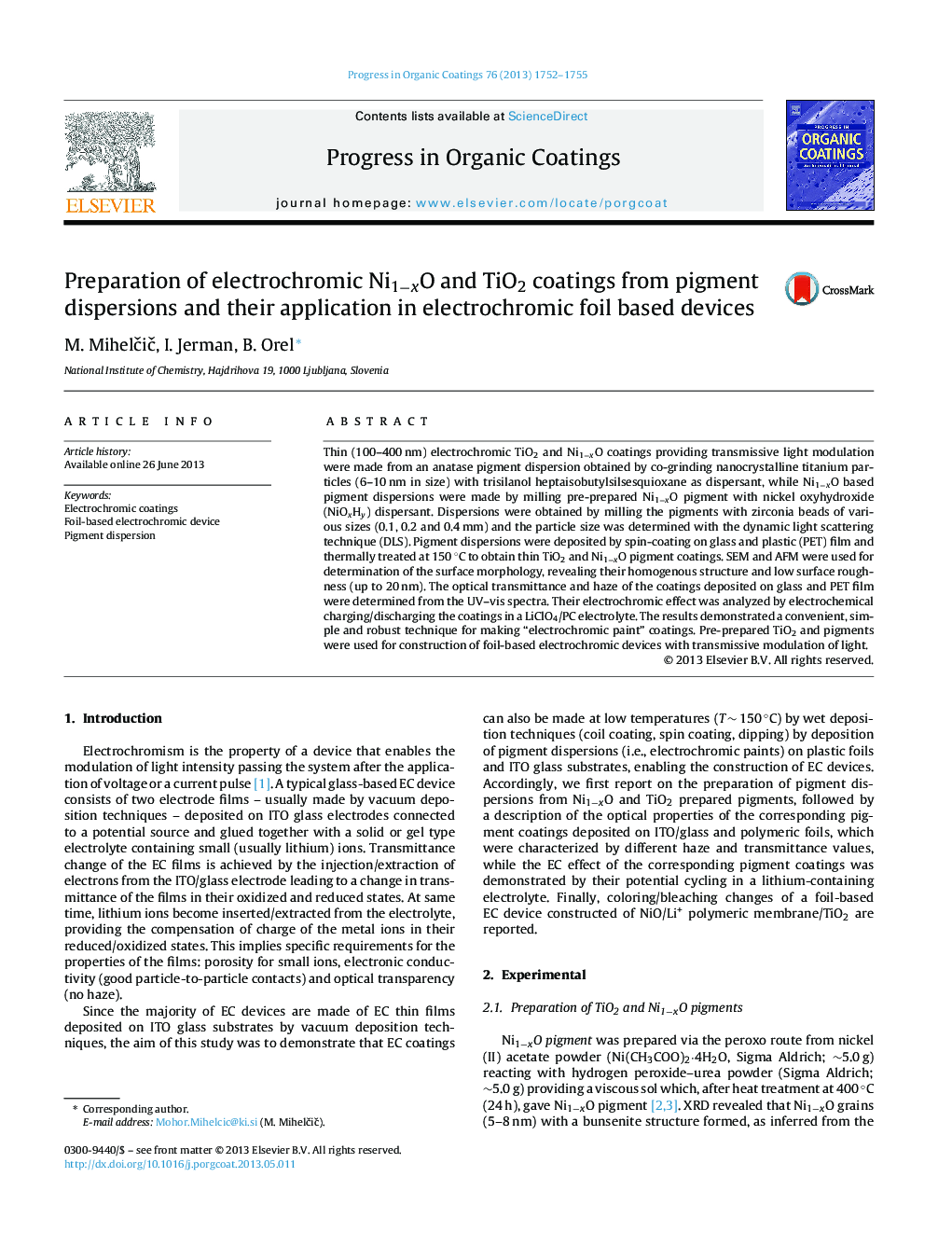| Article ID | Journal | Published Year | Pages | File Type |
|---|---|---|---|---|
| 692485 | Progress in Organic Coatings | 2013 | 4 Pages |
•Low temperature curing enabled the deposition of coatings on conducting plastic film.•Electrochromic coatings were deposited from nanodispersions.•Plastic foil-based EC Ni1−xO/TiO2 device.
Thin (100–400 nm) electrochromic TiO2 and Ni1−xO coatings providing transmissive light modulation were made from an anatase pigment dispersion obtained by co-grinding nanocrystalline titanium particles (6–10 nm in size) with trisilanol heptaisobutylsilsesquioxane as dispersant, while Ni1−xO based pigment dispersions were made by milling pre-prepared Ni1−xO pigment with nickel oxyhydroxide (NiOxHy) dispersant. Dispersions were obtained by milling the pigments with zirconia beads of various sizes (0.1, 0.2 and 0.4 mm) and the particle size was determined with the dynamic light scattering technique (DLS). Pigment dispersions were deposited by spin-coating on glass and plastic (PET) film and thermally treated at 150 °C to obtain thin TiO2 and Ni1−xO pigment coatings. SEM and AFM were used for determination of the surface morphology, revealing their homogenous structure and low surface roughness (up to 20 nm). The optical transmittance and haze of the coatings deposited on glass and PET film were determined from the UV–vis spectra. Their electrochromic effect was analyzed by electrochemical charging/discharging the coatings in a LiClO4/PC electrolyte. The results demonstrated a convenient, simple and robust technique for making “electrochromic paint” coatings. Pre-prepared TiO2 and pigments were used for construction of foil-based electrochromic devices with transmissive modulation of light.
Graphical abstractFigure optionsDownload full-size imageDownload as PowerPoint slide
